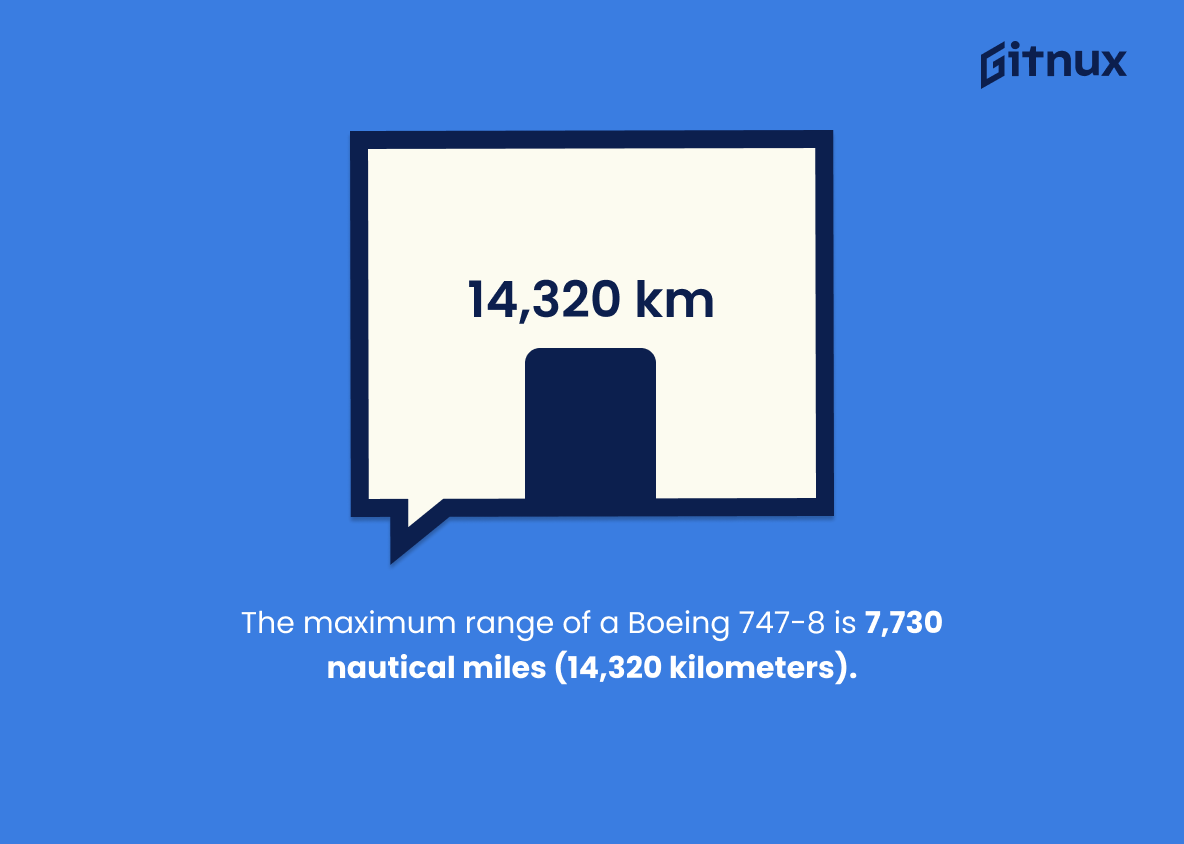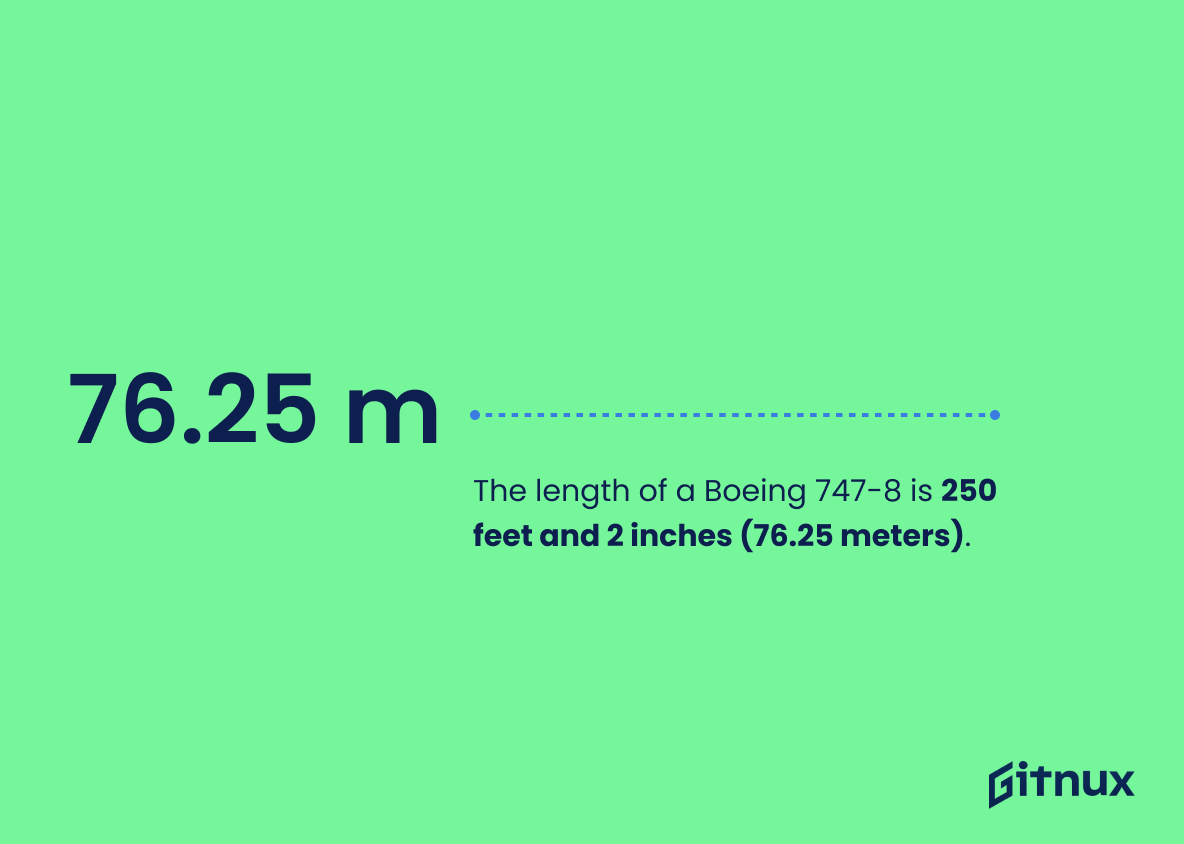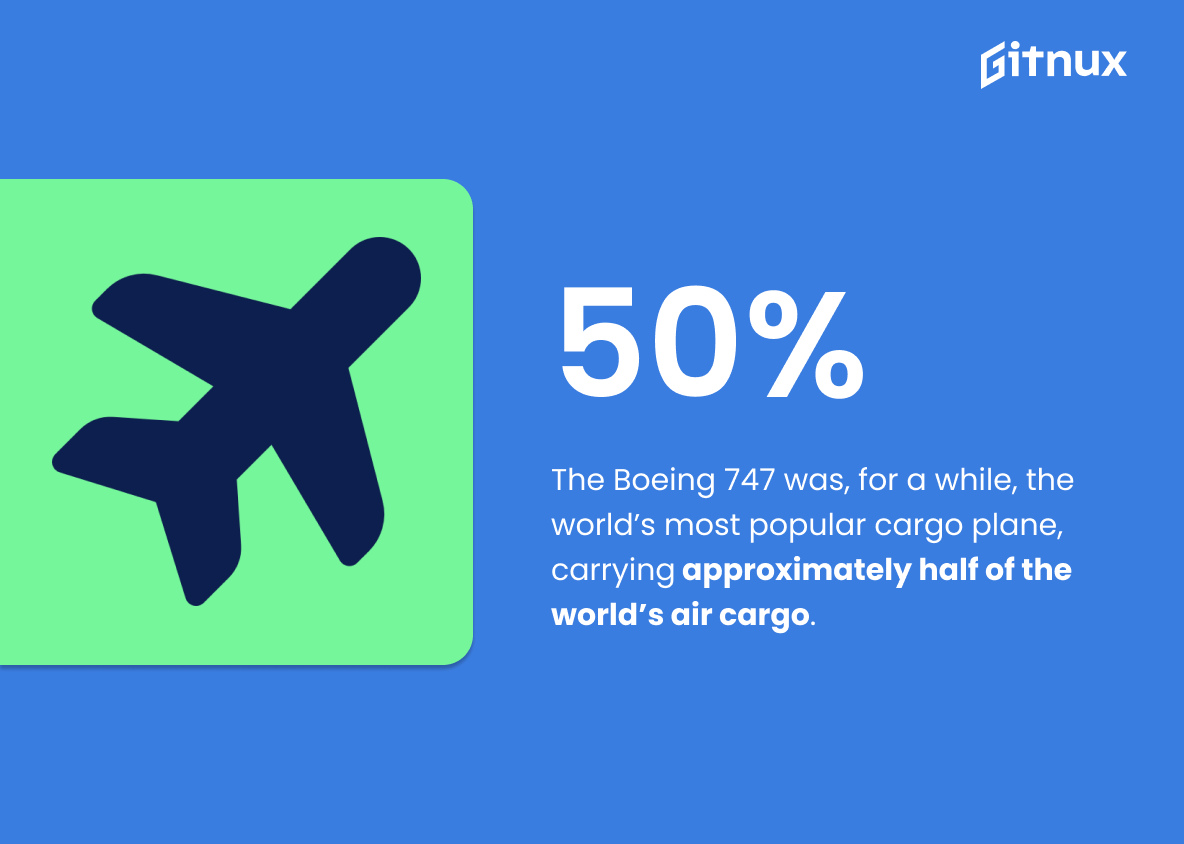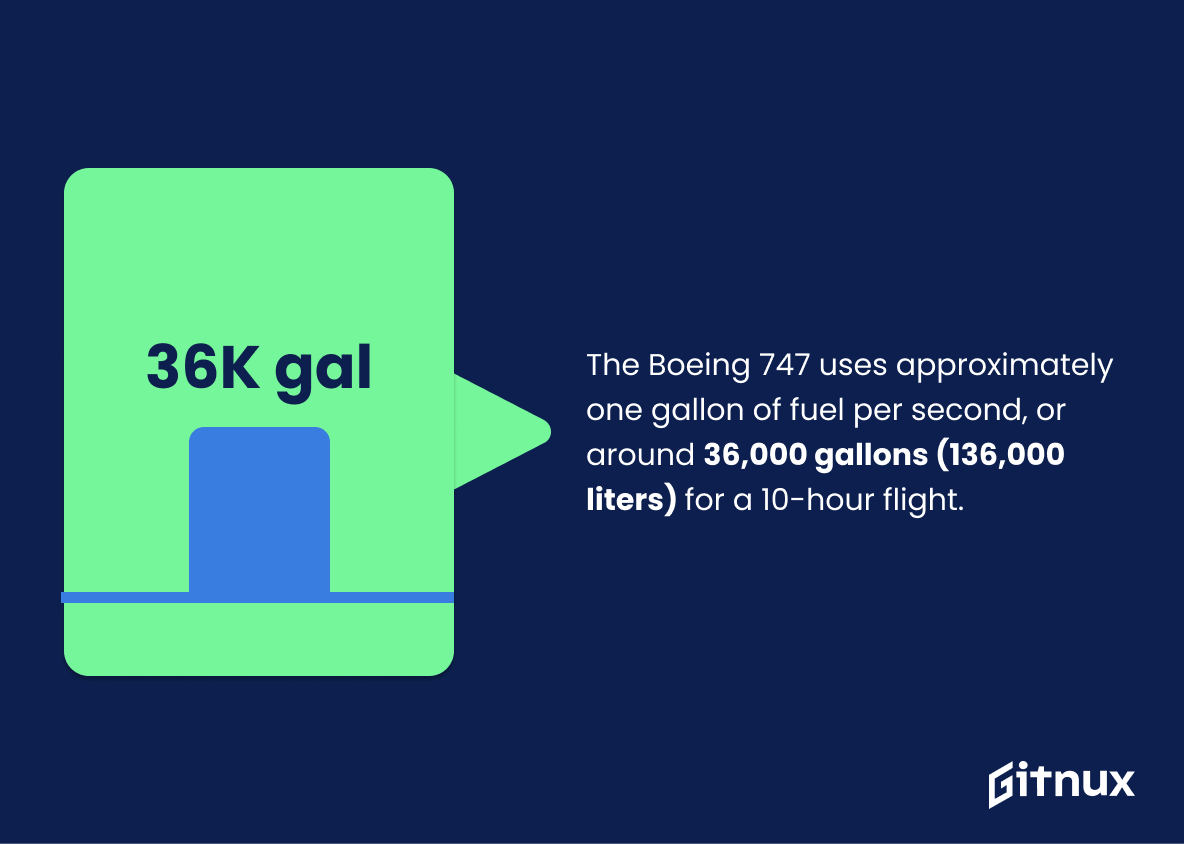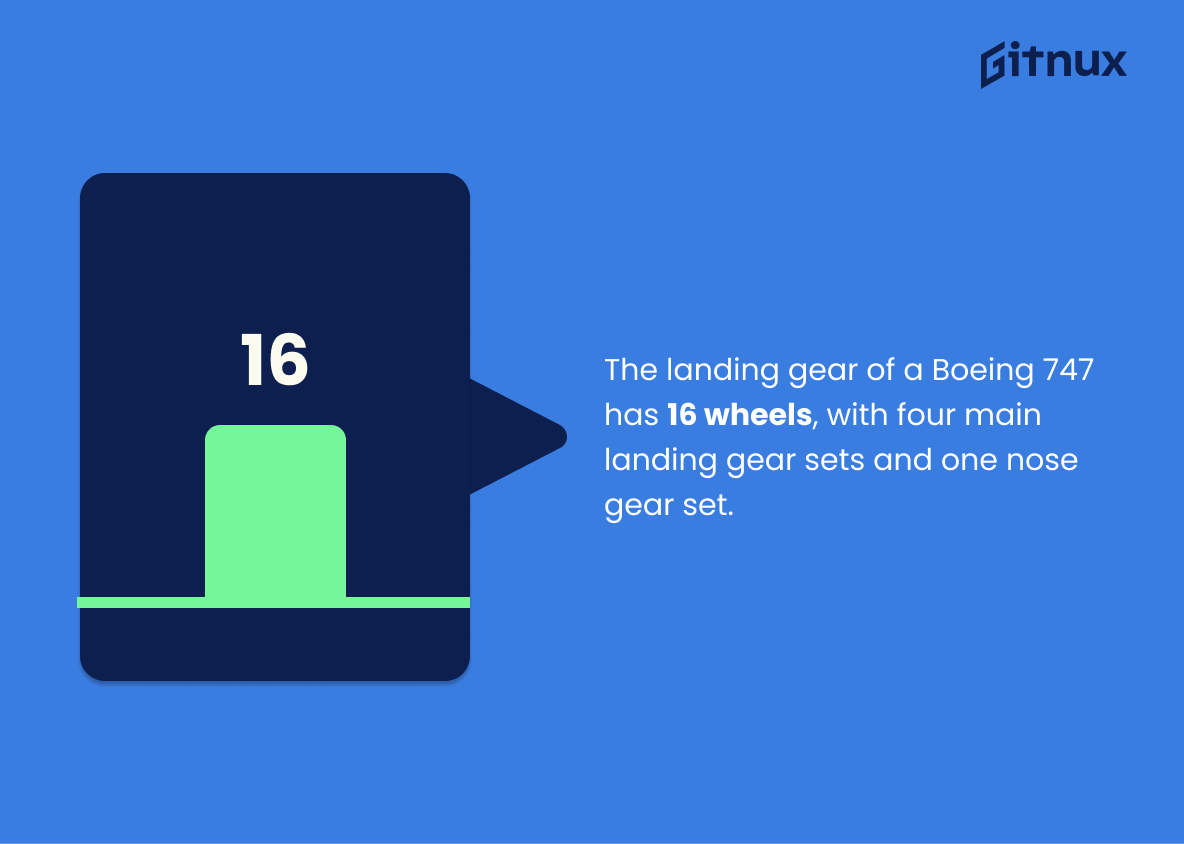The Boeing 747, an iconic aircraft since the late 1960s, remains in service today for passenger and cargo flights. Over 1,500 of these planes have been produced. With a wingspan of 211 feet and 5 inches (64.44 meters), it can carry up to 660 passengers and travel a maximum range of 7,730 nautical miles (14,320 kilometers). Its length is 250 feet and 2 inches (76.25 meters), and maximum takeoff weight is 987,000 pounds (447,695 kilograms).
Introduced by Pan American World Airways in January 1970, the 747 was initially designed with lounges or extra seating on the upper deck. In February 2020, the last passenger variant was rolled out before newer models like the Airbus A380s and Boeing 777Xs took over.
Apart from transporting passengers at speeds of 570 miles per hour (Mach 0.86), the jumbo jet plays a significant role in global air cargo transportation. Its large capacity handles half of all air cargo worldwide. Even NASA’s Space Shuttle uses a modified version called the Shuttle Carrier Aircraft. The exterior surface area spans 31 thousand square feet, and each engine produces 63 thousand pounds-force thrust. Remarkably, around 3 billion people have flown on a Boeing 747 so far.
Notable features include 16 wheels across four main landing gear sets, plus one nose gear set, and a fuel consumption rate estimated at 36 thousand gallons per 10 hours of flight time.
Boeing 747 Statistics Overview
The Boeing 747 can carry up to 660 passengers in its most high-density configuration.
This statistic is a testament to the sheer capacity of the Boeing 747, showcasing its ability to transport a large number of passengers in a single flight. This impressive feat of engineering is a key factor in why the Boeing 747 is such a popular choice for airlines and travelers alike.
The maximum range of a Boeing 747-8 is 7,730 nautical miles (14,320 kilometers).
The maximum range of a Boeing 747-8 is a testament to the aircraft’s impressive capabilities, allowing it to traverse vast distances with ease. This statistic is particularly relevant to a blog post about Boeing 747 Statistics, as it highlights the impressive reach of the aircraft and its ability to transport passengers and cargo to far-flung destinations.
The length of a Boeing 747-8 is 250 feet and 2 inches (76.25 meters).
The length of a Boeing 747-8 is an important statistic to consider when discussing the aircraft, as it is a key factor in determining the size of the plane and its capabilities. Knowing the exact length of the aircraft allows us to better understand the range of tasks it can perform, as well as the amount of cargo and passengers it can carry. This statistic is essential for anyone looking to gain a comprehensive understanding of the Boeing 747-8.
The upper deck of the Boeing 747 was initially meant for lounges or extra seating, not a full passenger section.
This statistic is a testament to the versatility of the Boeing 747. It demonstrates that the aircraft was designed with the intention of providing passengers with a variety of options, from lounges to extra seating. This speaks to the ingenuity of the engineers who created the aircraft, and the foresight of the designers who anticipated the needs of passengers.
The last passenger variant of Boeing 747 was rolled out in February 2020.
This statistic is a testament to the enduring legacy of the Boeing 747, which has been a staple of the aviation industry for over 50 years. It highlights the fact that the 747 is still a viable and popular aircraft, even in the modern era of air travel. This statistic is a reminder of the 747’s importance and its continued relevance in the aviation industry.
The Boeing 747 was, for a while, the world’s most popular cargo plane, carrying approximately half of the world’s air cargo.
This statistic is a testament to the Boeing 747’s impressive impact on the air cargo industry. It highlights the immense popularity of the aircraft, and its ability to transport a large portion of the world’s cargo. This statistic is a powerful reminder of the Boeing 747’s legacy and its importance in the history of air cargo.
NASA’s Space Shuttle used a modified Boeing 747 known as the Shuttle Carrier Aircraft (SCA) for transportation.
This statistic is significant in the context of Boeing 747 Statistics because it highlights the versatility of the aircraft. The fact that the Boeing 747 was modified to serve as a Shuttle Carrier Aircraft for NASA speaks to the aircraft’s ability to be adapted to a variety of uses. This versatility is a testament to the success of the Boeing 747 and its lasting impact on the aviation industry.
The “hump” on the Boeing 747 was designed to facilitate cargo loading on the main deck.
The inclusion of this statistic in a blog post about Boeing 747 Statistics is significant because it highlights the ingenuity of the design of the aircraft. The “hump” on the Boeing 747 was strategically placed to make cargo loading easier, demonstrating the thoughtfulness and attention to detail that went into the creation of the aircraft.
The Boeing 747 uses approximately one gallon of fuel per second, or around 36,000 gallons (136,000 liters) for a 10-hour flight.
This statistic is a testament to the incredible efficiency of the Boeing 747. It demonstrates that despite its size and power, the aircraft is capable of travelling for 10 hours on a mere 36,000 gallons of fuel. This remarkable feat of engineering is a testament to the ingenuity of the Boeing team and serves as a reminder of the incredible advances in aviation technology.
The Boeing 747 can fly at a cruising speed of around 570 miles per hour (Mach 0.86).
The fact that the Boeing 747 can fly at a cruising speed of around 570 miles per hour (Mach 0.86) is a testament to the power and efficiency of this iconic aircraft. It is a testament to the engineering prowess of the Boeing team and the dedication of the pilots who fly it. This statistic is a reminder of the incredible capabilities of the Boeing 747 and its place in aviation history.
The Boeing 747 has been involved in 61 airplane crashes up to 2021.
This statistic is a stark reminder of the potential risks associated with the Boeing 747. It serves as a cautionary tale for those considering flying on the aircraft, and highlights the importance of safety measures and regulations in the aviation industry.
The total engine thrust of a Boeing 747 is approximately 63,300 pounds-force (281.6 kN) per engine.
This statistic is a testament to the power of the Boeing 747, demonstrating its ability to generate an impressive amount of thrust per engine. This impressive power allows the aircraft to take off and fly at high speeds, making it a reliable and efficient mode of transportation.
Over 3.5 billion people, or half of the world’s population, have flown on a Boeing 747 at some point in their lives.
This statistic is a testament to the immense reach of the Boeing 747. It is a remarkable feat that half of the world’s population has experienced the iconic aircraft, highlighting its significance in the history of aviation.
The landing gear of a Boeing 747 has 16 wheels, with four main landing gear sets and one nose gear set.
This statistic is a testament to the sheer size and complexity of the Boeing 747. With four main landing gear sets and one nose gear set, it is clear that the Boeing 747 is a massive aircraft that requires a great deal of engineering and design to ensure its safe operation. This statistic serves as a reminder of the impressive engineering feat that the Boeing 747 represents.
Conclusion
The Boeing 747, an iconic aircraft with a 50-year service history, boasts a wingspan of 211 feet and 5 inches. It can accommodate up to 660 passengers and travel a maximum range of 7,730 nautical miles (14,320 kilometers). Originally designed with lounges or extra seating on the upper deck, over 1,500 units have been produced since 1968, with the last passenger variant introduced in February 2020.
Covering an exterior surface area of 31,000 square feet, the 747 consumes approximately one gallon of fuel per second during flight. NASA utilized a modified version, called the Shuttle Carrier Aircraft (SCA), for transporting the Space Shuttle. Notably, U.S. presidents from 1990 to 2021 flew on Air Force One, which was a Boeing 747 model.
Impressively, over 3 billion people have flown on this aircraft, making it a popular choice for cargo transportation, handling around half of all air cargo worldwide. With 16 wheels distributed across four main landing gear sets and one nose gear set, each engine delivers a total thrust of 63,300 pounds-force.
The Boeing 747 stands as an outstanding engineering achievement, an enduring icon in aviation history.
References
0. – https://www.bbc.com
1. – https://www.boeing.com
2. – https://www.skybrary.aero
3. – https://www.businessinsider.com
4. – https://www.leehamnews.com
5. – https://www.airspacemag.com
6. – https://www.frequentbusinesstraveler.com
7. – https://www.nasa.gov
8. – https://www.aviation-safety.net
9. – https://www.geaviation.com
10. – https://www.britannica.com
11. – https://www.theaircurrent.com
12. – https://www.aircraftcompare.com

